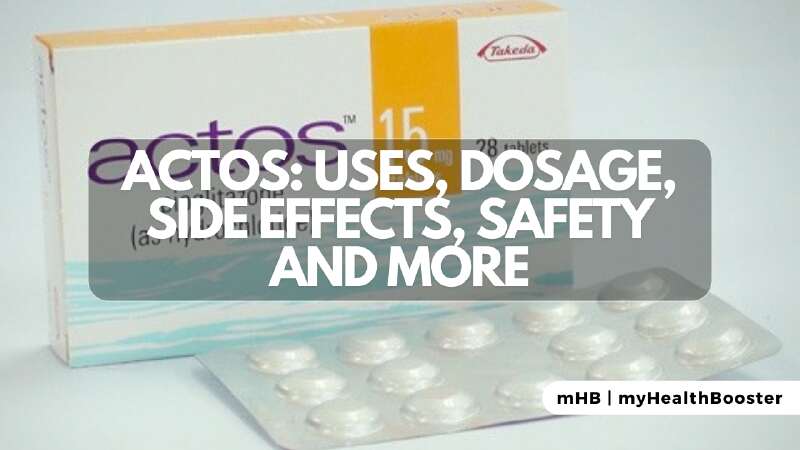GENERIC NAME(S): PIOGLITAZONE
CLASS: Thiazolidinedione
What is Actos?
Actos, generically known as Pioglitazone, belongs to the thiazolidinedione class of diabetes drugs, often referred to as “glitazones.” This article provides a detailed overview of Actos, covering its uses, dosage guidelines, potential side effects, safety precautions, and additional information to help individuals better understand this medication.
Uses of Actos
Actos is employed in conjunction with a proper diet and exercise regimen to manage elevated blood sugar levels in individuals with type 2 diabetes. Its mechanism involves restoring the body’s appropriate response to insulin, thereby aiding in blood sugar reduction. Properly controlling blood sugar helps prevent severe complications like kidney damage, vision impairment, nerve issues, limb loss, and sexual function problems. Actos is administered either as a standalone treatment or in combination with other diabetes medications.
How to Use Actos
Before commencing Actos, carefully read the Medication Guide provided by your pharmacist. The medication is typically taken orally, with or without food, as directed by your doctor. Dosage depends on various factors, including your medical condition, response to treatment, and concurrent medications. It is crucial to inform your healthcare provider about all products you use, including prescription drugs, nonprescription drugs, and herbal products. Consistency in taking Actos at the same time daily is advised for optimal results. Full effectiveness may take 2 to 3 months, and any lack of improvement or worsening conditions should be reported to your doctor.
Side Effects of Actos
Common side effects may include a sore throat, muscle pain, weight gain, or tooth problems. If these persist or worsen, consult your healthcare professional. Not everyone experiences serious side effects; however, prompt medical attention is necessary if you encounter new or worsening vision problems, bone fractures, reddish-colored urine, urgent or painful urination, or signs of liver disease such as persistent nausea, vomiting, dark urine, yellowing of eyes/skin, or abdominal pain. Actos typically does not cause low blood sugar (hypoglycemia), but if prescribed with other diabetes medications, caution is advised, especially with alcohol consumption or intense exercise.
Warnings
Actos may rarely cause or worsen heart failure. Immediate medical attention is required if symptoms like shortness of breath, swollen ankles/feet, unusual tiredness, or sudden weight gain are observed. This medication is not recommended for individuals with specific types of heart failure, and a thorough discussion with your doctor about pre-existing conditions is essential.
Precautions
Before taking Actos, disclose any allergies, especially if you have a history of heart disease, liver disease, fluid in the lungs, anemia, macular edema, or bladder cancer. Exercise caution with activities requiring alertness due to potential dizziness or drowsiness. Alcohol consumption should be limited due to an increased risk of low blood sugar. Stressful situations may affect blood sugar control, necessitating adjustments in treatment plans.
Interactions
Actos may interact with various drugs, potentially altering their effectiveness or increasing the risk of serious side effects. Beta-blocker medications may mask typical symptoms of low blood sugar, and careful monitoring is advised. Regular blood sugar checks and open communication with your healthcare provider are crucial to manage any medication adjustments.
Overdose and Missed Dose
In case of overdose symptoms or a missed dose, follow medical guidance promptly. Seek immediate medical assistance for severe symptoms like unconsciousness or difficulty breathing.
Storage of Actos
Store Actos at room temperature, away from light and moisture, and keep it out of reach of children and pets. Properly discard expired or unneeded medication as per pharmacist or waste disposal guidelines.
Summary
Actos is a valuable tool in managing type 2 diabetes when used judiciously. Understanding its uses, dosage, potential side effects, and safety measures empowers individuals to navigate their diabetes treatment journey more effectively. Regular communication with healthcare professionals and adherence to prescribed guidelines contribute to successful diabetes management.
